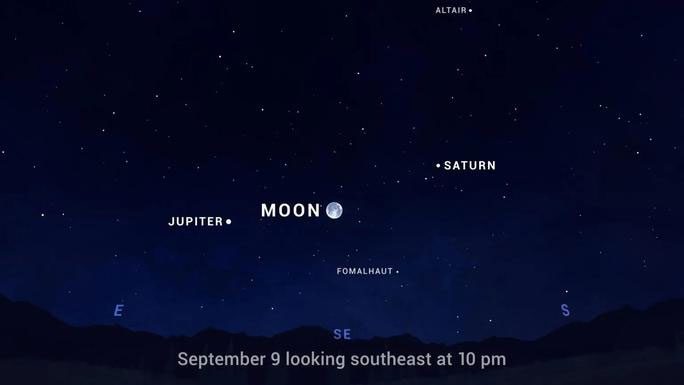Those who gaze at the September sky will witness the Red Triangle – a peculiar arrangement of three renowned celestial bodies, two of which are the subject of intense scientific study due to their intriguing mysteries.
According to SciTech Daily, the September Red Triangle is formed by three bright red celestial bodies: Mars, Aldebaran, and Betelgeuse.
Aldebaran is the bright red eye of the gigantic bull reigning over the sky – that is, the constellation Taurus. It is one of the brightest stars in the night sky.

The Red Triangle will dominate above the Orion constellation, becoming increasingly symmetrical in September – (Image: NASA/JPL-Caltech).
Betelgeuse is even more fascinating, known as one of the most mysterious and enigmatic stars. It is also a red supergiant, located 530 light-years away from us, in the constellation Orion, and has puzzled astronomers multiple times as it dims and brightens unexpectedly.
Scientists believe that Betelgeuse is in the process of dying. Therefore, every time it dims, people pay close attention, thinking it might explode. However, so far, Betelgeuse has not reached its death throes.

The giant star Betelgeuse has repeatedly “frightened” astronomers – (Graphic from NASA)
According to a study published in mid-August, NASA explained that the dimming events are due to a cloud of dust emitted from the star blocking the view from Earth. This is also a signal of its impending death. No one knows for certain when Betelgeuse will explode, but it is certain that people on Earth will witness that brilliant phenomenon.
Betelgeuse appears in the sky as a bright point on the shoulder of the hunter – the shape created by the Orion constellation.
The third vertex of the triangle is Mars, where NASA believes there may be life and has plans to establish a base.

Jupiter and Saturn “escort” the Moon – (Image: NASA/JPL-Caltech)
Additionally, skywatchers in September will have the opportunity to clearly see Jupiter and Saturn side by side in the sky for nearly the entire month, appearing to escort the Moon as it rises each day during the full moon phase.


















































